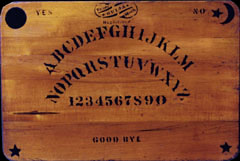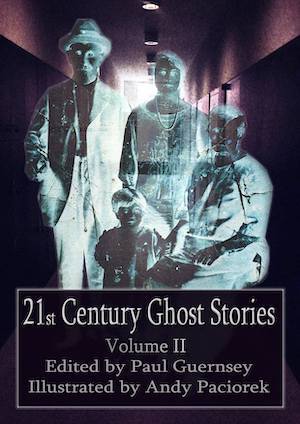
A Photo Of One Of The Original Ouija Boards From The Late 1800s. Note That Ouija Board Elements—Letters, Numbers, And Words—Have Changed Little Since The Beginning. Photographer: Unknown.
Ouija Boards: A Mystical, Mostly American, Invention
Most of what we know about the history of the Ouija board comes to us through the work of a spirit-board enthusiast and collector named Robert Murch, who has researched the topic since 1992.
Murch, probably the world’s foremost authority on Ouija boards, tells us that far from being an enchanted and somewhat sinister relic from the distant—perhaps pre-Christian—past as many people think, the Ouija board was created as a game in the last decade of 19th century America. As you can see from the photo (above), the first commercial talking boards were made of wood; the original purchase price was $1.50.
The Ouija board emerged during a period when a religious movement called “spiritualism” was growing in the US. One of the core beliefs of the spiritualists was that it was possible to communicate with the spirit world. These communications were conducted in a variety of ways, with séances led by facilitators called “mediums” among the most popular. By the 1880s, many spiritualists were also taking part in “do-it-yourself” séances involving homemade “talking boards” that had writing on them and used a sliding pointer similar to a Ouija board planchette to indicate letters and numbers. Similar devices for divination had been employed over the centuries in China and other places, although it is not known how widespread their usage was.
According to Murch, in 1890 a Baltimore man name Charles Kennard—a business man and decidedly not a spiritualist—moved to capitalize on the spirit-board craze by manufacturing and selling the boards. Kennard and his fellow investors came up with the name Ouija board, and the product received a patent in 1891. Many Americans who were not officially affiliated with the spiritualist movement became curious in the about this mysterious new product, and sales skyrocketed. The manufacturers soon built several factories in order to keep up with demand.
The year after the patent was issued an investor named William Fuld took control of the company and remained in charge until his death in 1927. Ouija boards were made by Fuld’s firm until 1966, after which the business was sold to the Parker Brothers game company. Parker Brothers itself was bought out in 1991 by Hasbro, which continues to manufacture Ouija boards. A number of other companies also make similar talking boards or spirit boards.
In the early 1970s, Ouija boards began to take on a (undeserved) reputation for being dangerous to the spiritual, mental, and even the physical health of the people who played with them. The controversy has continued to this day.

